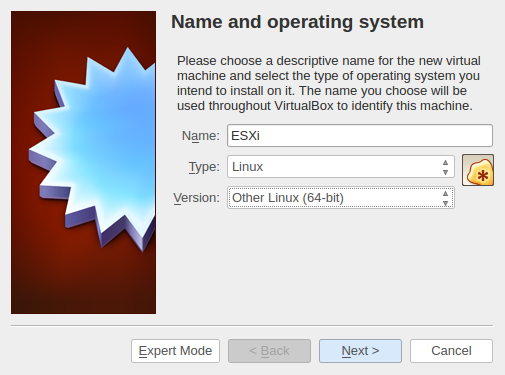

- VIRTUALBOX 64 BIT NOT SHOWING INSTALL
- VIRTUALBOX 64 BIT NOT SHOWING UPDATE
- VIRTUALBOX 64 BIT NOT SHOWING WINDOWS 10
- VIRTUALBOX 64 BIT NOT SHOWING ISO
VIRTUALBOX 64 BIT NOT SHOWING UPDATE
Head to Settings > System > Update & Security > Activation. How do I change my BIOS from 32-bit to 64-bit? Now, we want to select "VHD (Virtual Hard Disk)".NOTE: Select any amount of memory you wish, but don’t add more than 50 percent of your total RAM.Enter "Ubuntu" as the name, select "Linux" as the type, and select Ubuntu (64-bit) as the version.How do I run Ubuntu 64-bit on VirtualBox?įirst, open VirtualBox, then click "New" to create a virtual machine.
VIRTUALBOX 64 BIT NOT SHOWING INSTALL
Install the Guest Additions, then Reboot.Open the Guest Additions CD Image, then run VBoxWindowsAdditions. Inside the Windows 7 virtual machine, select Start Menu > Computer.Head to Devices > Insert Guest Additions CD Image.
VIRTUALBOX 64 BIT NOT SHOWING ISO
Install the VirtualBox Guest Additions ISO

How do I install Windows 7 64-bit on VirtualBox?
VIRTUALBOX 64 BIT NOT SHOWING WINDOWS 10
First off, head over to the Windows 10 download page. How do I install VirtualBox on Windows 10 64-bit? Exit Your BIOS and Reboot Your Computer.Select the Option for Enabling Virtualization.Locate the section for CPU configuration.


I advise you to stick with 32-bit if you don’t have a lot of RAM. You’ll be able to choose between a 32-bit and 64-bit install. This blog solve the issue "install ubuntu 64bit OS while my host is 64bit windows 10 operating system". There you go, if you only see 32-bit OS available that means something is wrong, and you are not utilizing the hardware to efficiently running those virtual machines.Why Does Virtualbox Only have 32-Bit Option, No 64-Bit Option on Windows 10. Launch VirtualBox, and create a new virtual machine you will find the option for you to pick the versions are expended and 64-bit operating systems should be listed. Now save the settings and restart back to Windows 10 again. Make sure the option for this check is enabled. Once you are inside the BIOS/UEFI configuration, go looking for the section called “ Intel Virtualization Technology” (if you are running an Intel CPU, sorry AMD). Keys like “ DEL”, “ F2”, “ F8”, “ F9”, “ F12” might do the trick. While it’s restarting, we are going to take a look at the second check that is make sure your Intel Virtualization Technology is enabled in the BIOS or UEFI Step Two – Enable Intel Virtualization Technology in BIOS or UEFIĭepends on the type of motherboard you are running, make sure to press the hot keys that would trigger you to load into BIOS/UEFI setting configurations. This will force you to restart your Windows. This will launch the prompt, where you can choose to uninstall Hyper-V You can go to Start > “ Turn Windows features on or off” If you have the feature added/running it doesn’t work very well side by side with other Virtual Machines like VirtualBox. Hyper-V is, essentially, Microsoft’s implementation of running virtual machine in your Windows. If you have one of those settings configured as mentioned, this is the reason why you are only seeing 32-bit guest operating systems available when create a new virtual machine. You either have Hyper-V turned on, or have Intel Virtualization Technology disabled in BIOS. It was showing 64-bit operating systems as one of those options in VirtualBox but you don’t know why there are only 32-bit versions listed below. So we know your machine is on 64-bit and perhaps at some point. You are not restricted in running 32-bit of Windows. This isn’t “normal” and you can fix it to enable VirtualBox to support 64-bit OS. If the host machine is 64-bit and you are using VirtualBox to host and running your virtual machine, don’t be puzzled if your VirtualBox is showing you that it can only support for 32-bit of operating system.


 0 kommentar(er)
0 kommentar(er)
